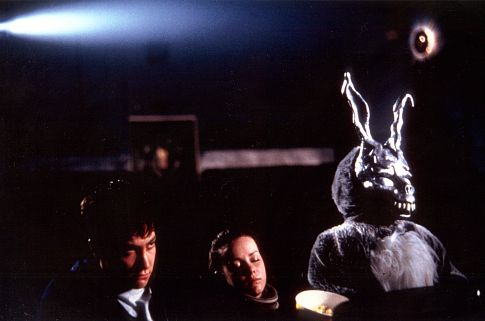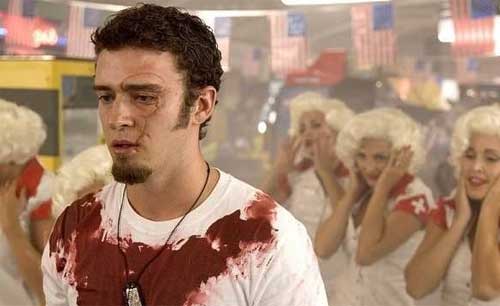
Title: Pulgasari
Director: Chong Gon Jo, Sang-ok Shin
Released: 1985
Director: Chong Gon Jo, Sang-ok Shin
Released: 1985
Staring: Chang Son Hui, Ham Gi Sop, Jong-uk Ri, Gwon Ri, Hye-chol Ro, Yong-hok Pak, Kenpachiro Satsuma
Rating: 4 / 5
Rating: 4 / 5
Plot: An evil king (Yong-Hok Pak) aware of the peasant rebellion being planned, steals all the iron in the country, to make weapons for his own personal army. After discovering bandits in the local village he imprisons them along with their leaders grandfather (Gwon Ri), who staves himself to death, while creating a tiny figurine of the mythical creature Pulgasari, which comes to life when combined with the blood of his daughter.Growing bigger with the more Iron it consumes it also helps the peasants to fight back against their corrupt king.
Review: Pulgasari is a film most commonly known for the tales behind it’s making, rather than the film itself, seeing how its creation was the result of the North Korean dictator and film fanatic Jong-il Kim being a fan of South Korean director Sang-ok Shin and apparently not being content with perhaps an autograph, instead had Shin kidnapped, forcing him to direct seven films for him, which Jong-il Kim acted as executive producer for, before Shin eventually managed to escape back to the South. Out of those film, this is one is the most well known, no doubt a result of its ties to the Kaiju genre, which is no doubt the reason it hasn't been forgotten entirely.
Review: Pulgasari is a film most commonly known for the tales behind it’s making, rather than the film itself, seeing how its creation was the result of the North Korean dictator and film fanatic Jong-il Kim being a fan of South Korean director Sang-ok Shin and apparently not being content with perhaps an autograph, instead had Shin kidnapped, forcing him to direct seven films for him, which Jong-il Kim acted as executive producer for, before Shin eventually managed to escape back to the South. Out of those film, this is one is the most well known, no doubt a result of its ties to the Kaiju genre, which is no doubt the reason it hasn't been forgotten entirely.
From the outset it might look like the Korean version of Godzilla of whom the creators, Toho studios are also on hand here to provide the creature effects with Satsuma donning the Pulgasari costume, whom is best known for having worn the Godzilla costume during the Hensi series, which does make it all the more surprising that his performance as Pulgasari is actually pretty ropey, with most of his screen time seeing Pulgasari stomping around with none of the grandeur of his Japanese cousin, spending more time staggering around like a drunk bear. Still the iron eating monster still makes another great edition to the Toho monster catalogue and is still a hundred times better than their seriously ropey looking King Kong, seen in “King Kong Vs. Godzilla” (1962)
The idea of creating a creature out of rice and mud, which for some bizarre reason turns into steel really bringing into question what kind of rice they have in Korea is an idea, really reminisant of “The Golem” (1920) especially seeing how the creature protects the persecuted peasants, acting like their protector in much the same way that the Golem was created to protect the Jews of Prague. Still due to the political connections that the film has, it has also picked up numerous comments from various critics, who have stated that it is in fact a propaganda piece about the dangers of unchecked capitalism and power of the collective, which does depend on how much you are reading into the film and considering the circumstances which it was made.
The idea of creating a creature out of rice and mud, which for some bizarre reason turns into steel really bringing into question what kind of rice they have in Korea is an idea, really reminisant of “The Golem” (1920) especially seeing how the creature protects the persecuted peasants, acting like their protector in much the same way that the Golem was created to protect the Jews of Prague. Still due to the political connections that the film has, it has also picked up numerous comments from various critics, who have stated that it is in fact a propaganda piece about the dangers of unchecked capitalism and power of the collective, which does depend on how much you are reading into the film and considering the circumstances which it was made.
The feudal Korean setting makes for a refreshing change, than the more traditional modern setting, much like the idea of having the monster uniting the peasant masses to battle, rather than being a creature of fear and destruction and in a way I would have liked to have seen more from the series, which unfortunately was not to be, thanks largely no doubt to the circumstances under which it was made. This fresh setting is truly made the most of, with the King resorting to more traditional traps including burying Pulgasari in a giant pit aswell as traping him in a cage and setting fire to it, before finally resorting to the use of a giant cannon, which results in Pulgasari using a rather unique version of spit-balling. Ironically these primitive methods seem awhole lot more effective than anything which the modern military can conjure up, which we have seen them attempt to use against Pulgasari’s Kaiju brethren, which usually tend to cause more damage to the surrounding area than the creature was causing in the first place.
The downside of the film I found not to be in the creature design, which is largely good, apart from a few select moments, when Pulgasari seems more rubber than steel, but instead my main qualm came from the score, which starts off with an orchestral score, but this is for some reason turns into a synthesized one with no reason why and in a way removed me from getting into the film more, seeing how it gives the film a feel of a low budget bollywood feature. I suppose the main gripe kind of comes from the lack of theme music which Pulgasari has, with nothing coming even remotely close to that of Godzilla’s theme “Godzilla March” which added such drama to the scenes, he appeared on screen, were as Pulgasari has instead got to rely on general background music and perhaps this is just another reason why Pulgasari makes for such a less imposing presence on the screen.
In all Pulgasari is a fun movie and while it might not be quite the Godzilla beater, which I’m sure it was intended to be, it at least comes off as one of the better imitators, especially seeing how it bothers to at least provide a slightly unique setting, rather than just being about another monster stomping through a major city, alone making it a title worth tracking down, while any political attachments are no doubt dependant on how much you want to read into it.





















No comments:
Post a Comment